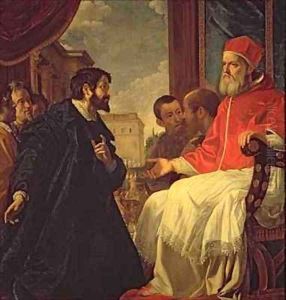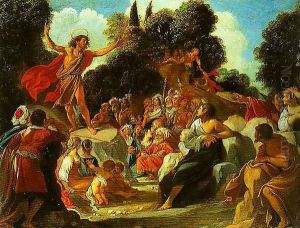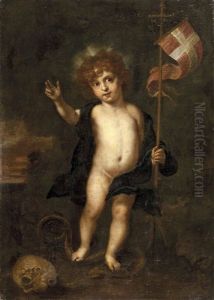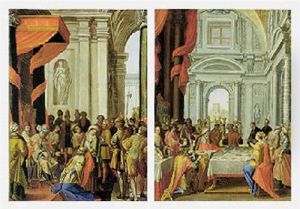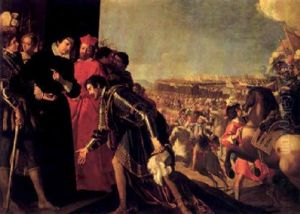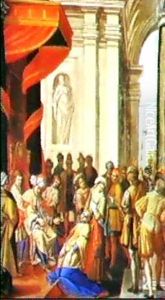Anastasio Fontebuoni Paintings
Anastasio Fontebuoni was an Italian painter and draftsman born in 1571 in Florence, Italy. He is considered part of the late Mannerist and early Baroque periods, which marked a transition in the art world from the highly stylized forms of Mannerism to the more naturalistic and dynamic approach of the Baroque. Fontebuoni's contributions, though not as widely recognized as some of his contemporaries, played a significant role in the artistic developments of his time.
Fontebuoni trained under the guidance of Domenico Passignano, a notable painter of the late Renaissance, which greatly influenced his early works. His training under Passignano prepared him well for the demands of his future projects, imbuing him with a strong foundation in the techniques of high Renaissance art, as well as introducing him to the emerging Baroque sensibility. Throughout his career, Fontebuoni worked on various commissions in Florence and Rome, which included altarpieces, frescoes, and panel paintings for churches and private patrons.
One of Fontebuoni's most significant contributions was his work on frescoes in the Basilica of Santa Maria Maggiore in Rome, showcasing his mastery in handling large-scale compositions and his ability to integrate his work into the architectural surroundings. His style is noted for its vibrant colors, dynamic compositions, and the emotional expressiveness of the figures, characteristics that align him with the emerging Baroque movement.
Despite his achievements, Anastasio Fontebuoni's work was somewhat overshadowed by the more dominant figures of his time, such as Caravaggio and Annibale Carracci, whose innovations in chiaroscuro and naturalism set new directions for Baroque art. However, Fontebuoni's contributions to Italian art of the late 16th and early 17th centuries remain valuable, particularly his role in the transition between the Mannerist and Baroque styles.
Anastasio Fontebuoni died in 1626 in Rome, leaving behind a legacy that, while not as well-known as some of his peers, is appreciated for its artistry and historical significance in the evolution of Italian art. His works continue to be studied for their technical skill and for the insight they offer into the artistic transitions of his time.
